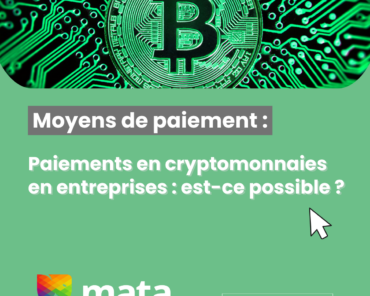post
By rania
Facturation électronique et obligation de e- reporting
Electronic invoicing and e-reporting obligation: what if the first step was the review of intra-group transactions?
With deadlines approaching, the operational implementation of the VAT reform known as « e-invoicing / e-reporting ») may not be a long calm river for many companies.
As a reminder, the electronic invoicing reform actually includes two future obligations for companies:
- Le e-invoicing désigne l’obligation de recevoir et de transmettre toutes les factures dans les flux domestiques (opérations d’achats et de ventes de biens et/ou de prestations de services réalisées) entre professionnels (B2B) assujettis à la TVA via un flux de données électroniques ;
- Le e-reporting désigne l’obligation de transmettre à l’administration des données de transactions pour les flux à destination des particuliers (ventes B2C) et pour les flux avec des entreprises étrangères (opérations d’achats et de ventes de biens et/ou de prestations de services réalisées B2B) également de manière électronique.
Au 1er juillet 2024, il y aura une obligation de réception de facture électronique pour TOUTES les entreprises assujetties à la TVA. Et entre juillet 2024 et janvier 2026, l’émission des factures électroniques et la transmission de données de facturation deviendra obligatoire pour TOUTES les entreprises progressivement en fonction de leur taille.
Dans la mesure où des contrôles accrus, davantage digitalisés et automatisés sont attendus, il est primordial de profiter des délais accordés par le calendrier de la réforme pour anticiper sa mise en œuvre dans l’entreprise quelle que soit sa taille.
Parmi les toutes premières étapes du processus de mise en conformité, les entreprises vont devoir réaliser un diagnostic de l’existant avec la réalisation d’une cartographie de leurs transactions avec les tiers et de leurs transactions intra-groupe (transactions domestiques pour le e-invoicing et transfrontalières pour le e-reporting).
If the realization of this mapping should not pose a major problem for transactions with third parties, different situations can make the mapping of intra-group transactions more complex (eg, large number of transactions, nature and/or origin of uncertain transactions (transactions « historical »), no or few contracts to regulate these transactions, contracts not updated, wording of invoice and/or imprecise account, etc.) and necessarily delaying the operational implementation of the VAT reform.
In this context, it may be appropriate to carry out a global review of intra-group transactions upstream intended to identify potential ways of simplifying / rationalizing transactions that will allow companies to gain in operational efficiency (saving time during the transition to electronic invoicing and more generally when calculating, monitoring and invoicing intra-group transactions).
This review could also make it easier to raise cash within the groups and limit potential tax risks in the event of an audit in France or abroad (highlighting the risks and proposals for corrective measures expected by the tax authorities). On this last point, it is important to emphasize that the transmission of data to the French tax authorities via e-reporting will reinforce the panoply of « tools » at its disposal (file of accounting entries, declaration of the transfer (Form 2257-SD), master file and local transfer pricing documentation file). With access to continuous information the French tax administration will be able to cross-reference information even more easily, detect inconsistencies and thus gain in efficiency in the programming of tax audits.
In conclusion, the review of intra-group transactions (domestic and cross-border) and the related transfer pricing policy should naturally be imposed on all companies as a key step in the operational deployment of the VAT reform.
Geoffrey Vergne, PwC Law Firm, Director – Transfer Pricing
Source: The world of law






